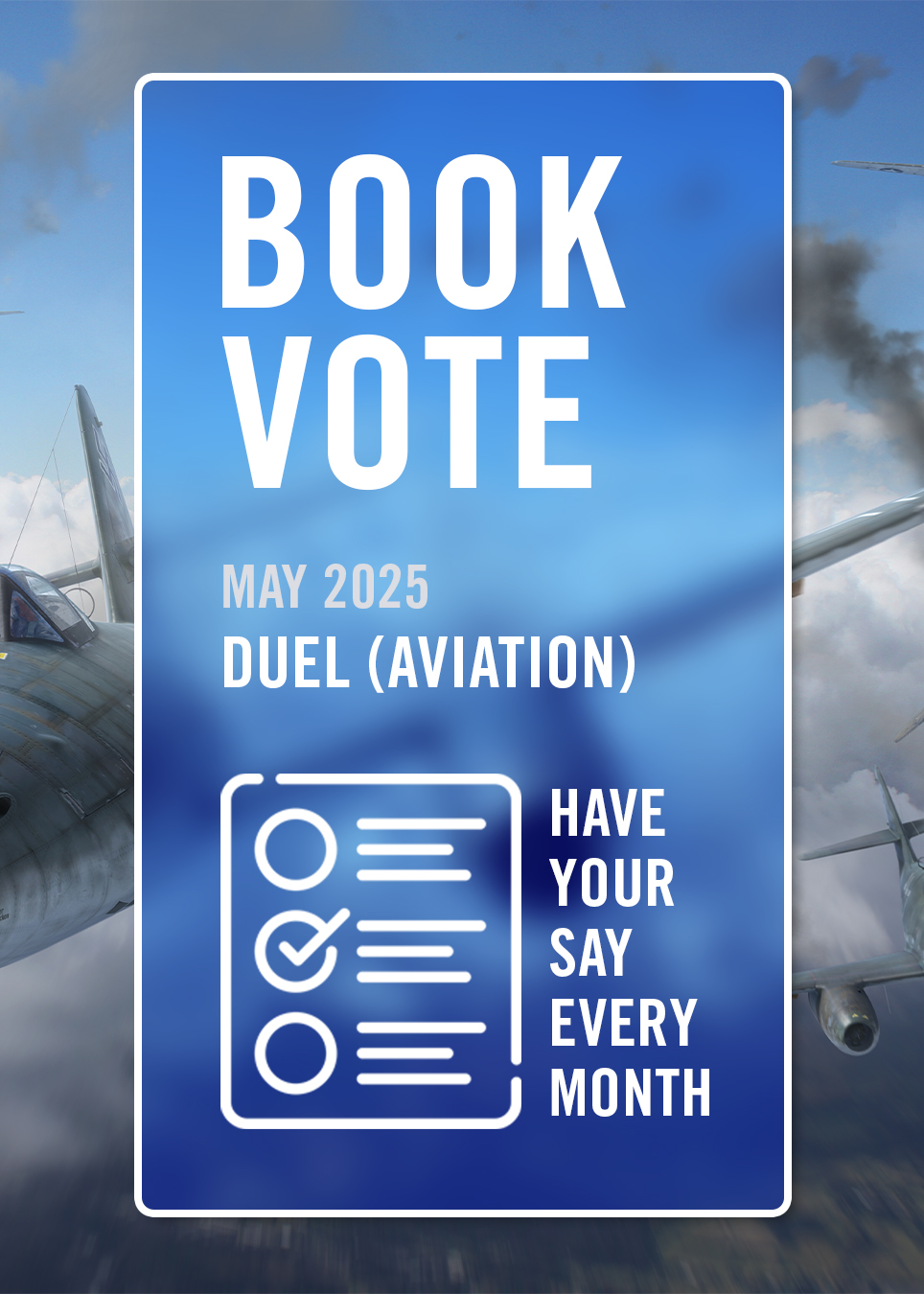
This month's book vote sees five Duel (Aviation) titles battling for your support. Read the full descriptions and have your say by visiting the Book Vote page. Plus, check out the results of last month's Elite vote.
PZL P.11a/c vs Bf 109D/E (Poland 1939)
Argentine Navy Fighter-Bombers vs Royal Navy Warships (Falklands/Malvinas 1982)
Hs 129 vs T-34 (Eastern Front 1942–44)
Luftwaffe Bombers vs British AA Defences (Britain 1941–45)
Allied Anti-Aircraft Defences vs Luftwaffe Jabo (Normandy 1944)
PZL P.11a/c vs Bf 109D/E (Poland 1939)
The German air assault on Poland in September 1939, spearheaded by the Bf 109, posed significant challenges for Polish fighter pilots flying the P.11. While the PZL-built aircraft had once been at the forefront of aviation design, by 1939 it was outclassed by the German fighter, which boasted superior firepower, speed, and represented the cutting edge of modern military aviation. Despite this technological disadvantage, Polish pilots displayed extraordinary courage and skill, taking on the Luftwaffe in their gull-winged P.11s.
Argentine Navy Fighter-Bombers vs Royal Navy Warships (Falklands/Malvinas 1982)
By early 1982, the Argentine Navy's Naval Aviation Command had four attack squadrons, employing everything from Turbo Mentor turboprop aircraft to modern Super Étendards. This small but very effective force was involved in the sinking of three Royal Navy warships (as well as a merchant ship), and damaged several others, during the Falklands War, losing several aircraft in the process. Meanwhile, the Royal Navy had to fight an unthinkable war some 8000 nautical miles from home, with weapons designed for another enemy in another theatre. Some worked, some did not.
Hs 129 vs T-34 (Eastern Front 1942–44)
The introduction of the Hs 129 into Luftwaffe service in 1942 on the Eastern Front caused problems for Soviet tank crews, especially those manning the mainstay T-34. They were at once confronted by a potent new German anti-tank weapon that was heavily-armed and armoured, and initially difficult to counter. The Soviets duly worked on ways to meet this new threat, while on the German side, continuing development in anti-tank weaponry and tactics led to a fascinating duel not only on the frontline, but ‘behind the scenes’ as well between designers and weapons specialists.
Luftwaffe Bombers vs British AA Defences (Britain 1941–45)
Whilst the end of the Blitz in May 1941 saw a downturn in the intensity of Luftwaffe air operations over Britain, German air attacks would continue in various campaigns almost to the very end of the war. This meant that the importance of anti-aircraft guns did not diminish with the end of the heavy raids of the Blitz. Much had been learned by Anti-Aircraft Command, and the guns, ammunition and ranging and sighting had all improved, while batteries were better placed to defend against the new attack such as from ‘tip-and-run’ raiders, the ‘little Blitz’ offensives and the V1 flying bomb campaign. Right up until May 1945, Anti-Aircraft Command would be a potent force to be reckoned with.
Allied Anti-Aircraft Defences vs Luftwaffe Jabo (Normandy 1944)
The first job of any anti-aircraft (AA) defence is to make attacking aircraft fly higher and decrease accuracy. During the post-D-Day campaign in Normandy in the summer of 1944, Luftwaffe Jabo encountered some of the most heavily defended Allied AA defences of World War 2. British, Canadian and American ground forces were liberally equipped and trained with world’s best AA guns, each division bristling with both large and small calibre weapons. On D-Day, the Luftwaffe had just one dedicated Fw 190 Jabo unit in Normandy ready for combat. Shortly after fighter-bomber reinforcements flew into the area, with many aircraft being quickly modified with bomb racks.
Last month, we asked what you would like to see published in our Elite series. Thank you to everyone who voted and provided feedback. Here are the results:
French Commanders of the Hundred Years’ War - 10%
Commanders of the Great Northern War 1700–21 - 8%
Counter-Insurgency Tactics in the Napoleonic Wars - 17%
German Armies at War 1815–66 - 14%
Soviet State Security Services 1946–1991 - 50%

Comments
You must be logged in to comment on this post. Click here to log in.
Submit your comment